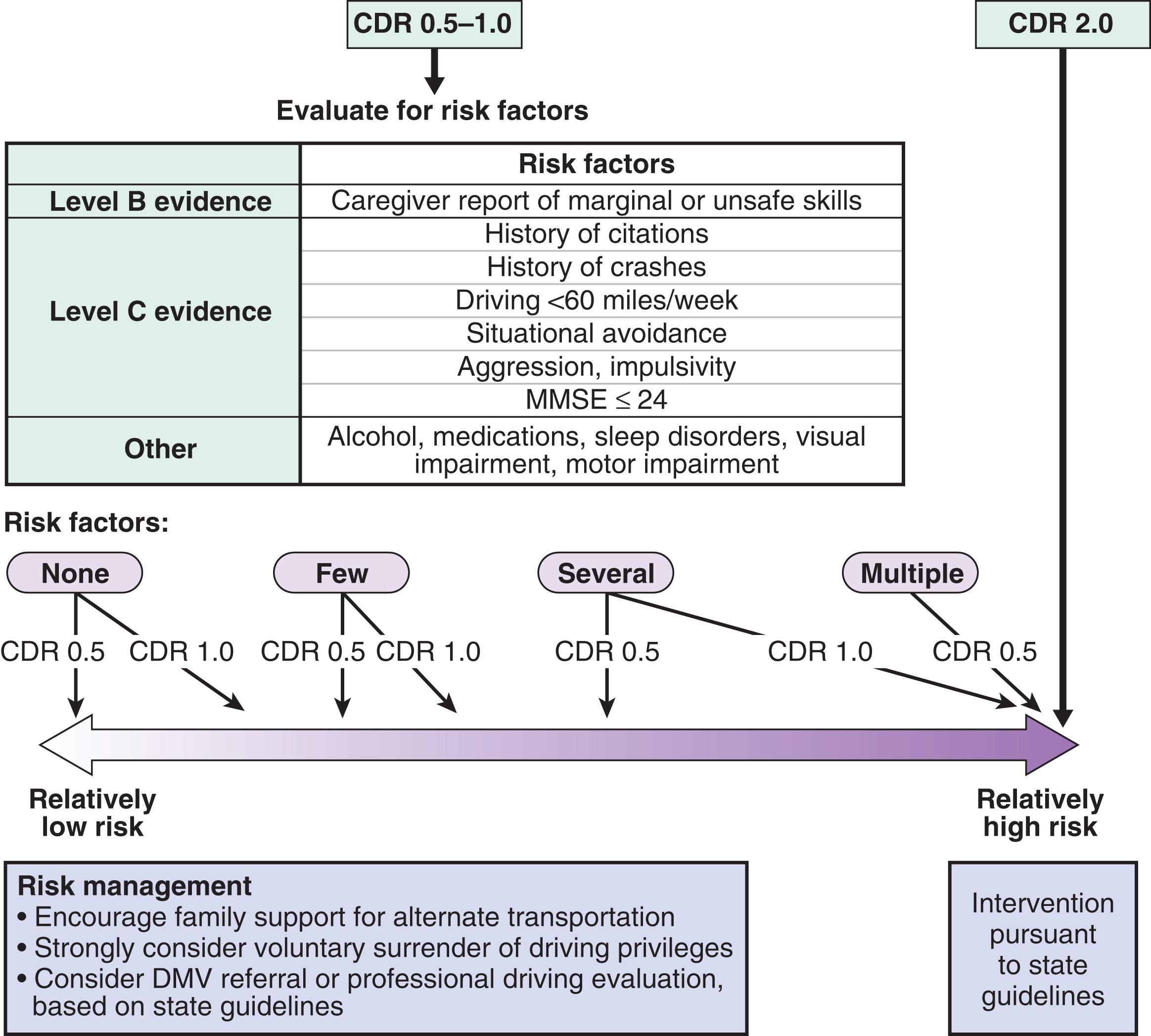Physical Address
304 North Cardinal St.
Dorchester Center, MA 02124
Patients with mild cognitive impairment and very mild Alzheimer’s disease dementia may be able to drive.
A family member should ride in the passenger seat monthly while the patient is driving to help assure that the patient is driving safely.
Driving should stop either when the patient reaches the mild stage of Alzheimer’s disease dementia or when the family member is uncomfortable riding in the car.
When the patient does not want to stop driving, a formal driving evaluation is available at most rehabilitation hospitals and departments of motor vehicles.
Patients with mild cognitive impairment and Alzheimer’s disease dementia at any stage need to have their financial affairs supervised.
Family members or legal representatives should monitor all financial matters.
The patient should be protected from telemarketers and other unscrupulous individuals soliciting monies and investment.
Independent financial investing should cease immediately.
Patients with mild cognitive impairment and both very mild and mild Alzheimer’s disease dementia may be able to continue working.
Working is healthy from the patient’s perspective.
The patient will need to be in a supervised setting.
The job should entail no risks or dangers to the patient as well as relevant co-workers, customers, or consumers if problems in job performance were to occur.
In general, patients with moderate to severe Alzheimer’s disease dementia should not be left alone.
Home health aides and homemakers can provide assistance to patients and respite to caregivers.
Home health aides help with the patient’s personal needs, such as bathing.
Homemakers help with household chores, such as cooking and laundry.
Day programs provide a healthy routine for the patient and respite for the caregiver.
Start at least two days per week; increase as needed.
Call it a “club.”
Assisted living is ideal for patients who need more care than can be provided in the home when there is not a ready caregiver available. There are a large variety of assisted living facilities:
Some are almost independent living facilities, some are almost nursing homes, and some are in-between.
Unfortunately, most insurance does not pay for assisted living facilities.
Long-term care is necessary for almost all patients with dementia at some point in their illness.
Encourage families to plan ahead.
The family should look for a facility that they like and is close to home.
Units that specialize in dementia care are ideal, if available.
See also Chapter 25 for additional discussion of many of these important topics.
Driving is one of the most difficult issues that arises and will need to be addressed with almost every patient who has dementia. How do we know if the patient in our office is safe to drive? Cognitive assessments have, unfortunately, been disappointing in their ability to identify which patients with cognitive impairment should and should not be driving ( ). In 2000 the American Academy of Neurology published a practice parameter paper based upon a meta-analysis of the available literature. The main finding was that patients with very mild Alzheimer’s disease have motor vehicle accident rates similar to 16- to 19-year-old drivers. Because we allow 16- to 19-year-olds to drive, the conclusion was (and we agree) that it is reasonable for patients with very mild Alzheimer’s disease dementia to be allowed to drive as well ( ). (See Chapter 4 for details on distinguishing the very mild from the mild stage of Alzheimer’s disease dementia.)
However, even if it is safe for patients with very mild Alzheimer’s disease to drive in general, how do we know if it is safe for the particular very mild patient sitting in our office to drive? In 2010 the American Academy of Neurology published an update to their practice parameter paper which helped to identify additional risk factors for unsafe driving ( ), which has subsequently been validated ( ) ( Fig. 28.1 ).

This practice parameter is helpful but, even if it is safe for the patient to drive today, what about next week or next month? If it is determined that the patient with very mild Alzheimer’s disease is safe to drive, we recommend that each month a family member ride as the front-seat passenger with the patient driving along his or her regular routes. Adult children are the best observers ( ). For the most part, as long as the family member feels comfortable riding in the car with the patient driving, then we feel comfortable allowing the patient to continue driving. Driving should stop when either the family member no longer feels comfortable riding in the car, accidents or near accidents occur, or the patient progresses from the very mild to the mild stage of Alzheimer’s disease dementia.
If there is a controversy between the patient and his or her family, we recommend a formal driving evaluation, which can be done at most rehabilitation hospitals and departments of motor vehicles. These evaluations are (unfortunately) unlikely to be covered by insurance, and cost several hundred dollars. But they are much less expensive than a single accident.
Become a Clinical Tree membership for Full access and enjoy Unlimited articles
If you are a member. Log in here